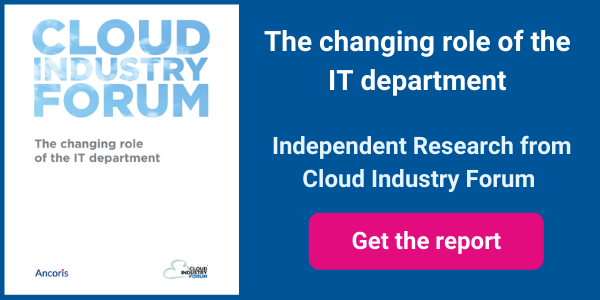You may be thinking about moving to the cloud because it’ll cost less than continuing to use traditional data centre hosting. But cutting data centre costs should be only the first step to running a more efficient IT operation. The most successful companies don’t just focus on cutting the cost per server by a specific amount. Instead, they look at how IT can help the business as a whole to improve its operational efficiency.
To do this, they first ask themselves questions that allow them to understand how fit their infrastructure is for their business operations:- what is the IT team actually providing to users and enabling them to do?
- for each of those things, how much does it cost to provide that thing and only that thing?
- how can we optimise the total per-unit costs associated with each thing?
The answers to these questions let the IT team create a unique economic model that will drive productive conversations with business managers about what IT is providing. For example, your model may show that you spend a particular amount each month providing office productivity tools to 300 users, or e-commerce systems handling 100,000 customer transactions per month, or systems supporting 500 field technicians making 6 customer site visits each day?
Once you’ve reframed your IT operations in those terms, you can start asking the really interesting questions — the ones that will help your business meet long-term transformational goals using the same (or lower) budget. For example, you can ask how you can modernise your infrastructure to:
- improve the availability of office tools for the increasing number of employees who are mobile or work remotely
- add new revenue-driving features to our line-of-business systems more quickly
- help field technicians become more productive so that they can make more visits each day
Of course, sometimes, you really do need to start by reducing the costs of business as usual, to give you the breathing room to tackle these bigger questions. Maybe you’re about to renegotiate a data centre lease or software licensing agreement. Maybe you’re facing a costly hardware purchase for a data centre refresh. Or perhaps your business has grown by acquisition and you need to consolidate and simplify multiple data centres and separate infrastructures. You aren’t able to move away from your current platforms right now and you need to avoid disruption to the business, but you still need to become more efficient.
In this case, Lift and Shift should be your preferred infrastructure modernisation strategy. If you have a VMWare environment, you can move it from a data centre to run natively on Google Cloud and typically reduce your TCO by a least 25%. You’ll benefit from the economies of scale provided by Google, eliminate the upfront time and cost of hardware refreshes and improve reliability and availability while simplifying your disaster recovery plans. But there’s no need to re-architect your apps or retrain your staff.
Similarly, if you use a common line-of-business system like SAP rather than custom applications, Lift and Shift means you can stop worrying about infrastructure issues like performance and availability and focus your energies on moving forwards with digital transformation and innovation projects that exploit more of the application’s capabilities. Customers who’ve used our joint offering with SAP to migrate their SAP workloads to Google Cloud are seeing the migration pay for itself in the first year through infrastructure cost savings alone. They also find it simpler to integrate SAP with other cloud applications and adopt advanced analytics tools to gain better business insights.
If you’re looking to become more agile as well as save costs, then your infrastructure modernisation strategy should be Lift and Modernise. Google’s Anthos, an entirely software-based containerisation solution, lets you migrate any application, running on any technology stack completely unmodified. Once you’ve containerised your existing applications, you’ll then be able to develop, operate and maintain them much more efficiently. An assessment by Forrester Research found Anthos users saw a 13-fold improvement in time to market, as well as a 55% increase in the operational efficiency of their infrastructure, after containerising their apps.
Whatever strategy you choose, Google Cloud partners like Ancoris can help you build the business case for your migration, comparing what it would cost to keep running in your current environment with all the costs of migration and running in Google Cloud. We can also support you through every step of your migration to the cloud — and beyond — as you deliver your company’s digital transformation strategy.
If you’d like to know more about using infrastructure modernisation to improve your operational efficiency, come and talk to the infrastructure modernisation experts in our GCP team. We will be happy to offer a free assessment.

